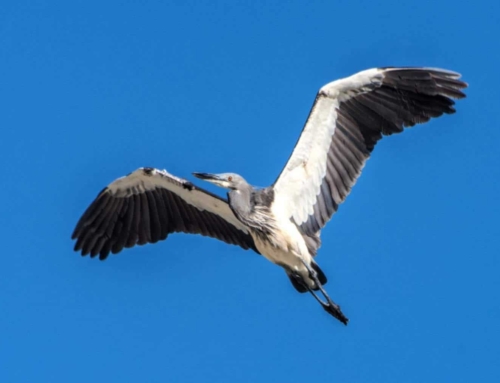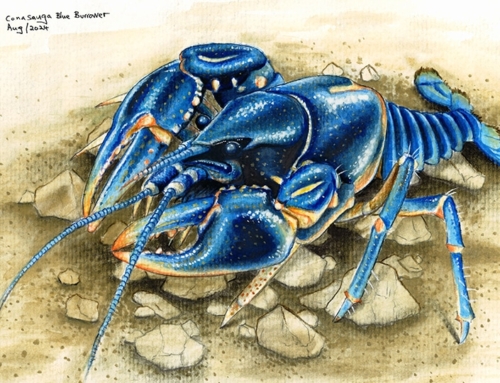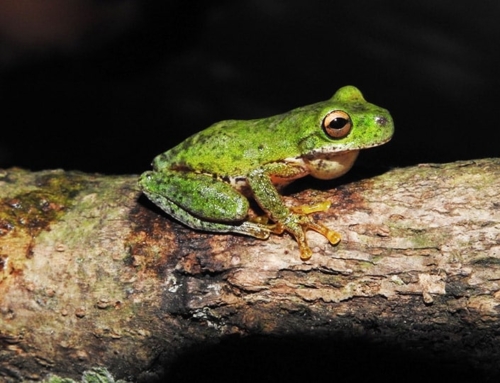In the 20th century, a new infectious disease emerged and caused an unprecedented environmental catastrophe. Chytridiomycosis, a fungal skin infection, has compounded an amphibian extinction crisis driven by habitat loss, overharvesting and pollution, resulting in 40 per cent of amphibians being threatened with extinction.
Today, over 20 years after the first chytrid fungus was described, we remain largely helpless when chytridiomycosis emerges in a new area, with no widely applicable mitigation measures and no treatment that offers long-lasting protection. As a last resort, many amphibian species have been saved by establishing ex situ captive populations – how can we return them safely to the wild?
A global amphibian ark
When I first stepped behind the scenes of a zoo’s herpetology department, as a student keeper, I knew that I would meet animals facing threats like pollution, habitat destruction, and a voracious pet trade. I wasn’t expecting to see amphibian after amphibian, tank after tank, being kept solely out of sheer, fierce hope. Safely cocooned in miniature, curated forests and streams are little communities, upon whose existence entire species depend. Members of The Amphibian Survival Alliance, a partner of Synchronicity Earth, are helping these families ride out the waves of a mass extinction event beyond their doors, hoping that one day their descendants will be safe outside the confines of these arks. The problem is that these animals are threatened by disease. That disease, chytridiomycosis, lives on in the soil of the forests and the waters of the streams long after its victims have gone; once it’s arrived – likely hitchhiking on a pet, a frog destined for a laboratory, or in some undisinfected water discarded down a drain – it is nearly impossible to eliminate. Their habitats may look pristine, but they cannot be made safe.
“The impact of chytridiomycosis on frogs is the most spectacular loss of vertebrate biodiversity due to disease in recorded history” – Skerratt et al., 2007
Chytridiomycosis is caused by two species of microscopic fungi. Batrachochytrium dendrobatidis (Bd) was isolated in 1998 from the skin of a Blue Poison Dart Frog that died mysteriously in a zoo. Then, in 2014, Batrachochytrium salamandrivorans (Bsal), literally the salamander-devourer, was identified in the Netherlands. The arrival triggered collapses of fire salamanders, killing around 96% of the country’s population.
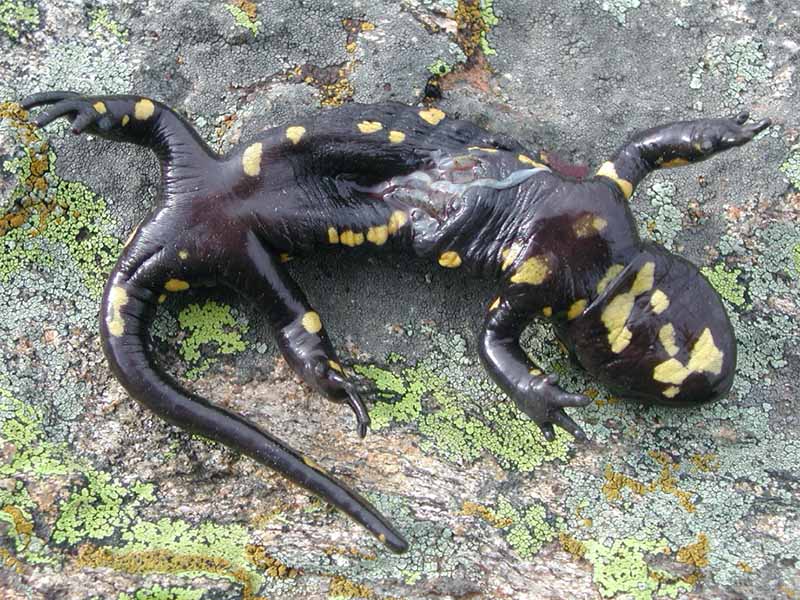
Fire Salamander Bsal mortality © Jaime Bosch
The scale and speed of declines these fungi inflict are unprecedented and, in the wild, unmanageable. Most people think of fungal pathogens as ringworm, or athlete’s foot but certain characteristics of fungi can make them perfect pathogens. They don’t need their host to survive, it’s no problem for them to hang around, maybe even for months, waiting for another victim to walk by; their genomes are large and flexible – individuals can swap genetic material with relative ease; and some of them are staggeringly unspecific in their infection targets.
Bd and Bsal have driven an estimated 90 species to extinction, and 200 more to the edge
For a complex problem, creative solutions are needed
This year, humans have discovered what facing the rapid, global spread of a largely untreatable infectious disease feels like, and researchers have delivered the truly stunning achievement of creating a vaccine in less than a year. For amphibians, however, vaccination cannot provide the solution. A vaccination relies on triggering the immune system, and in many amphibians, chytrid fungi somehow avoid triggering any kind of immune response at all, making it impossible to vaccinate against. The host animal dies infested with fungus, but their cells don’t even recognise the invasion.
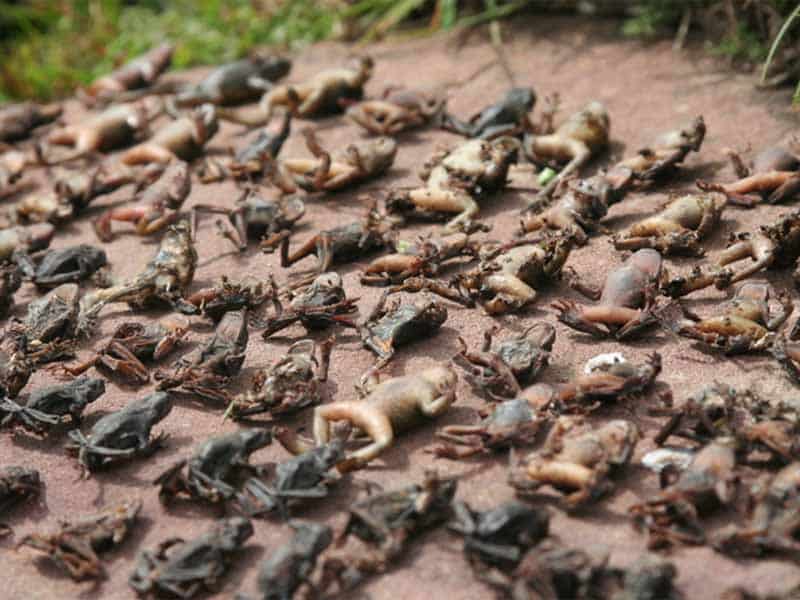
Midwife toad, Alytes obstetricans, mortality from a single lake in the French Pyrenees © Matthew Fisher
But, there is some hope. Creative and dedicated people all over the world have identified other possible pathways to a post-chytrid world. The disease has been eliminated in nature once; in Mallorca a Herculean effort was staged to remove all wildlife from infected ponds, treat every animal, even disinfect the rocks of the ponds themselves, and then return the clean water and wildlife. This saved the Mallorcan Midwife toad, but clearly isn’t widely replicable. Golden Bell frogs in Australia have been helped to persist alongside the fungus by researchers who slightly raised the salinity of their habitat. This makes conditions just uncomfortable enough for the fungus that transmission rates fall to a level the frogs can tolerate.
Some amphibians can resist the fungi and studying these species has made it clear that the whole microbial community around an amphibian is important in determining its fate.
Microbes are constantly fighting each other on their hosts and some actively repel Bd and Bsal, protecting their living home. There has been promising research showing that the transplantation of these microbes or the chemicals they produce might provide protection. However, one of the reasons this crisis arose in the first place was humans moving microbes around the world – we must think carefully before we do so again, even with good intentions.

Mallorcan midwife toad © Pria Ghosh
A worthy cause or a lost cause?
The challenge of dealing with chytridiomycosis could seem both impossible and to some people unimportant, unworthy of the time and money required for such a complex issue. There is, of course, a moral argument that it is simply unacceptable to stand by and watch as hundreds of species disappear from a disease that humans have spread, and continue to spread, around the world.
Amphibians are a vast and ancient branch of the tree of life; they’re stunningly beautiful, biologically fascinating, and diverse in their behaviour, their appearance and their appeal. It would be a collective failure of humanity to consign this broad and wonderful swathe of existence to a ‘no hope’ pile.

Panamanian golden frog, female. Photo by Brian Gratwicke (Flickr: CC BY 2.0)
However even if this was not true, even if amphibians were boring, and unappealing, and no one cared about them, it’s still in our own interests to tackle this disease and the amphibian extinction crisis more widely. Amphibians are vital components of ecosystems; they are unusual in occupying critical points as both predators and prey in many food webs. They keep insect levels under control, managing our pests for free and reduce our infectious disease burden. Recent research has shown that the chytridiomycosis-driven collapse of frog populations in Panama and Costa Rica in the 1990s and 2000s resulted in substantial increases in malarial cases in the region. Amphibians are also often the canary in the coalmine when it comes to environmental damage. Their existence on both land and in water combined with their environmental sensitivity means that maintaining habitats in a state suitable for amphibians results in good homes for other species too.
As amphibians disappear, we run the risk of losing future ground-breaking medical interventions. Chemicals produced by amphibians, and the microbes living on them, have been shown in the lab to block HIV transmission, disrupt the growth of blood vessels into cancer cells, be potent painkillers and kill antibiotic resistant bacteria, as just a few examples. The ability of some amphibians to regrow limbs is illuminating how modern medicine can improve tissue healing, regeneration and growth. Who knows what future cures we could lose if we lose amphibians?
If this extraordinary year has taught us anything, it’s that as a global community we need to be more alert to the dangers emerging pathogens pose, and to develop approaches that can manage disease in highly complex, challenging environments.
Even if no one cared about amphibians at all, a disease that is capable of driving over 200 species to the edge of extinction in less than 20 years is a disease we should understand and develop solutions for, because the next one may hit closer to us or our support systems.
Moving from species surviving to species thriving
So, what can we do? There’s unlikely to be a single solution. All of the promising research on chytrid mitigation deserves to be fully considered and tested but as yet, despite huge amounts of academic research, there has been little translation into field trials on the ground. One of the goals of Synchronicity Earth’s Amphibian Programme is to address this gap. In the meantime, we support the fantastic work our partners are already doing to combat the myriad other threats facing amphibians.
Perhaps it’s ducking responsibility to lay the blame for the amphibian extinction crisis at chytrid’s door and hope for an innovative solution. The majority of amphibians threatened by chytrid are also threatened by overharvesting, by habitat destruction, by pollution or simply by being allowed to drift into extinction through a lack of knowledge about the threats they face. Perhaps if we focus on relieving these pressures, those populations will also have enough reserves left to have a fighting chance against chytridiomycosis. The challenge of dealing with chytridiomycosis is a serious one, but it is crucial to understand how to ensure similar devastation, whether among human or wildlife communities, is never allowed to tear through our ecosystems again.


